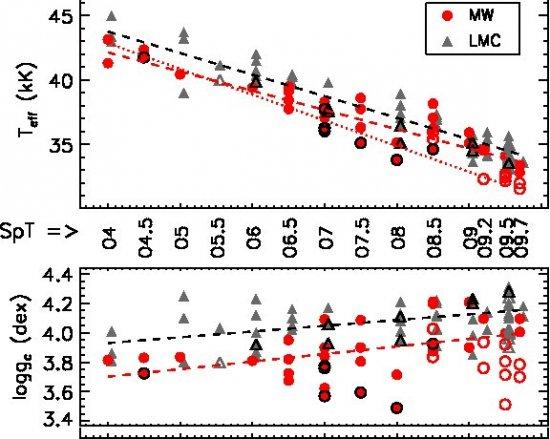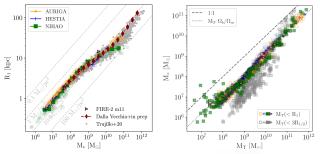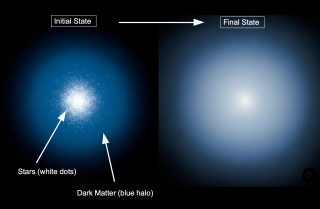We are now in an era of large spectroscopic surveys of OB-type stars. Quantitative spectroscopic analysis of these modern datasets is enabling us to review the physical properties of blue massive stars with robust samples, not only revisiting mean properties and general trends, but also incorporating information about the effects of second-order parameters. We investigate the spectral type -- effective temperature (SpT - Teff) calibration for O-type dwarfs, and its claimed dependence on metallicity, using statistically-meaningful samples of stars extracted from the IACOB and VFTS surveys. We perform a homogeneous differential spectroscopic analysis of 33 Galactic and 53 LMC O dwarfs (spanning spectral types of O4 - O9.7) using the IACOB-GBAT package, a chi-square-fitting algorithm based on a large pre-computed grid of FASTWIND models, and standard techniques for the hydrogen/helium analysis of O-type stars. We compare the estimated effective temperatures and gravities as a function of (internally consistent) spectral classifications. While the general trend is that the temperature of a star increases with earlier spectral types and decreasing metallicity, we show that the large range of gravities found for O-type dwarfs -- spaning up to 0.45-0.50 dex in some spectral bins -- plays a critical role on the dependence of the effective temperature calibrations as a function of spectral type and metallicity. This result warns us about the use of SpT - Teff calibrations for O-dwarfs which ignore the effects of gravity, and highlights the risks of employing calibrations based on small samples. The effects of this scatter in gravities (evolutionary status) for O-type dwarfs should be included in future recipes which employ SpT - Teff calibrations.
Figure Caption: Teff and log gc estimates for the Galactic (red circles) and LMC (gray triangles) O-type dwarfs as a function of SpT; corresponding linear fits are overplotted with red and black dashed lines. The figures show the scatter found in effecti
Advertised on
References



